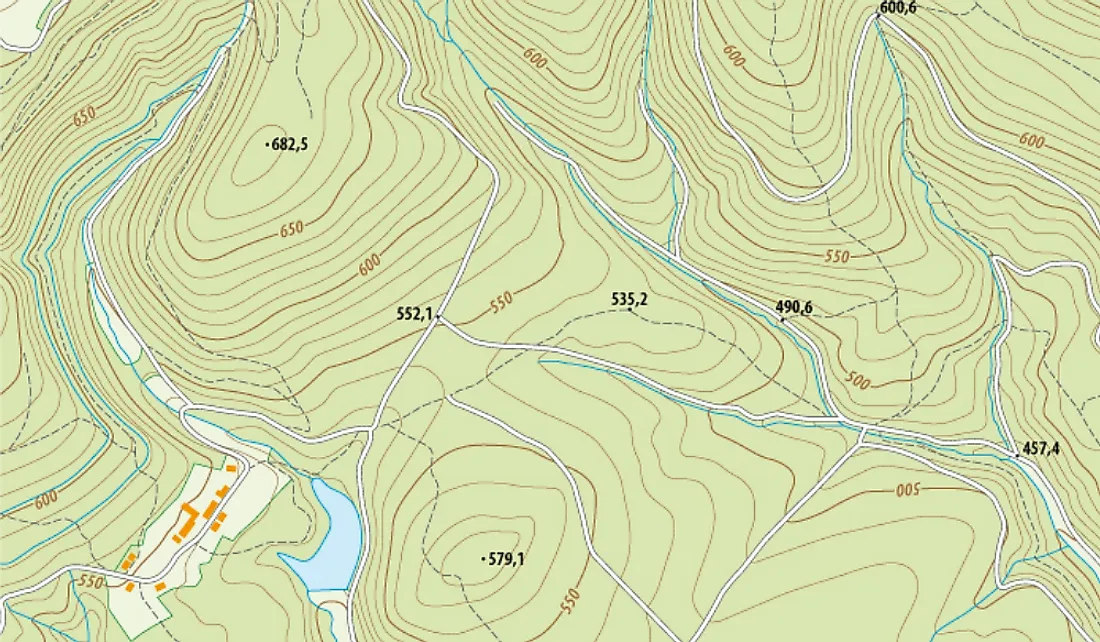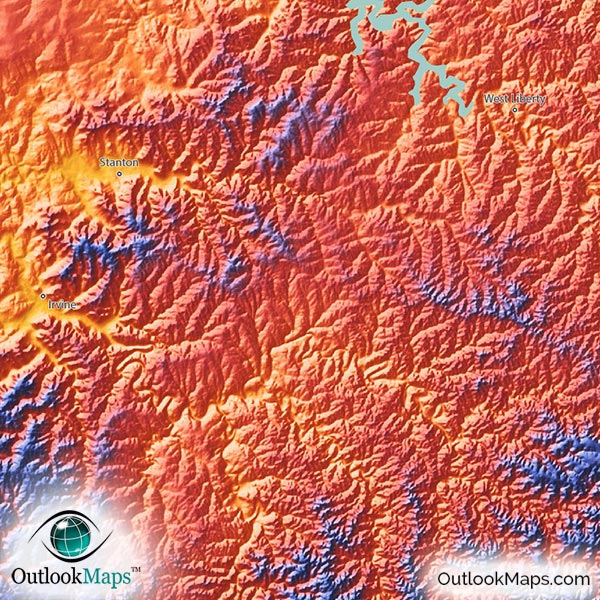

Surveyors locate benchmarks, and geologists locate their actual positions relative to the map and can determine if changes to the land have occurred. Highway planners determine the best routes for highways knowing the cut and fill areas. Knowing the shape of the terrain enables a hiker to plan a hike. Hikers, campers, snow skiers, city and county planners, the Fish and Wildlife Service, Forest Service, miners, loggers, highway planners and construction workers, travelers, surveyors, geologists, engineers, and scientists are just a few of the people who use topographic maps. Hachure marks along a contour show depressions, for example, of a crater or the mouth of a volcano. "Cutting" a line through the contours enables the map reader to draw a profile of that section of the mountain or plateau. Experienced map readers can look at the contours and visualize the three-dimensional shape of the land. Gentle sloping hills or flat plains have contours farther apart from each other. Contour lines close together indicate steep mountainsides or cliffs. If the contour interval is 10 feet, the elevation changes 10 feet within these adjacent lines. The elevation change between any two adjacent countour lines (the contour interval) is the same everywhere on a given map. If you look at a topographic map, the solid, curving lines are contour lines that indicate the elevation and shape of terrain. What do contour lines on topography maps represent? Topographic maps generally cover an area bounded by 7.5 minutes of latitude and 7.5 minutes of longitude (about 160 square kilometers), and are known as 7.5-minute quadrangle maps.

A 1:24 000-scale map provides more detail with its larger scale. On a 1:316 800-scale map, each inch represents 316,800 inches or 5 miles. For example, on a 1:24 000-scale map, each inch represents 24,000 inches or 2000 feet. Scales are represented as ratios such as 1:24 000 to 1:500 000, where the larger the denominator the smaller the scale. How are the scales on a topographic map interpreted? These maps are in feet and miles, but new maps are being produced using metric measurements. Geological Survey has been making topographic maps since 1882 and has completed maps for the entire country. Topographic maps are often nicknamed "topo maps" for short. Roads, towns, mines, benchmarks, water, types of vegetation, along with many other features also are included on topographic maps using map symbols and colors. Elevations and the shape of the terrain are shown by the contour lines. Topographic maps of the Tri-Cities area show such features as Red Mountain, Zintel Canyon, Iowa Flats, and the Rattlesnake Hills.

Topographic maps have contour lines that show topographic features such as canyons, mountains, plains, and plateaus. Topography is a three-dimensional representation of the Earth's surface on a two- dimensional surface (paper) as seen from overhead looking directly down. The topography of the lower Columbia Basin includes canyons, hills, and valleys.


 0 kommentar(er)
0 kommentar(er)
